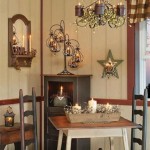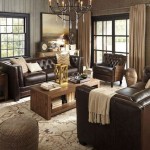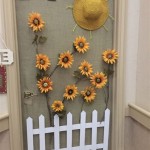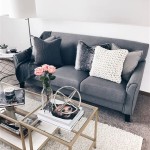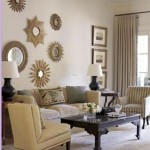Dental Hygienist Room Decor: Creating a Calming and Professional Space
The dental hygienist's operatory is more than just a workspace; it's an environment that significantly impacts patient comfort and perception of professionalism. Thoughtful room decor can transform a sterile clinical setting into a welcoming space, easing patient anxiety and enhancing the overall dental experience. This article explores key elements of dental hygienist room decor, focusing on creating a calming and professional atmosphere.
Color Psychology: Color plays a vital role in setting the mood of any room. In a dental setting, cool, calming colors such as soft blues, greens, and lavenders are often preferred. These hues evoke feelings of tranquility and serenity, helping to alleviate dental anxiety. Neutral tones like beige and gray can also create a soothing backdrop, promoting a sense of calm and professionalism. Bright, stimulating colors like reds and oranges should generally be avoided, as they can increase anxiety or agitation.
Wall Art and Decor: Carefully chosen artwork can enhance the aesthetic appeal of the operatory and provide a welcome distraction for patients. Nature-themed artwork featuring landscapes, seascapes, or botanical prints can create a calming and relaxing atmosphere. Abstract art with gentle lines and soothing colors can also contribute to a peaceful environment. Avoid cluttered or overly stimulating artwork, as this can heighten anxiety.
Lighting: Proper lighting is essential for both functionality and ambiance. Natural light is ideal, as it creates a bright and welcoming space. However, in rooms with limited natural light, consider incorporating warm, indirect lighting fixtures. Avoid harsh overhead fluorescent lighting, which can feel sterile and uninviting. Dimmable lights allow for adjustments based on the procedure being performed and the individual patient's needs.
Ergonomics and Functionality: While aesthetics are important, functionality should not be compromised. The operatory layout should prioritize efficient workflow and patient comfort. Ensure adequate space for movement and easy access to equipment. Ergonomically designed chairs and equipment contribute to both hygienist comfort and patient well-being. Consider incorporating adjustable chairs for patients with mobility issues.
Textiles and Upholstery: The choice of fabrics and upholstery can significantly impact the overall feel of the room. Soft, plush materials in calming colors create a sense of comfort and luxury. Consider using hypoallergenic and easy-to-clean materials for patient safety and hygiene. Coordinating the colors and patterns of textiles with the overall color scheme of the room contributes to a cohesive and professional look.
Sound Management: Noise can be a significant source of anxiety for dental patients. Consider incorporating sound-absorbing materials into the room design, such as acoustic panels or thick curtains. Playing calming background music can also help to mask the sounds of dental equipment and create a more relaxing atmosphere. Nature sounds or instrumental music are often good choices.
Scent Control: Unpleasant odors can negatively impact the patient experience. Ensure adequate ventilation in the operatory and regularly clean and disinfect all surfaces. Consider using air purifiers to remove airborne particles and maintain fresh air quality. Subtle, calming scents like lavender or vanilla can be used sparingly, but always consider patient sensitivities and allergies.
Personalization and Patient Engagement: While maintaining a professional atmosphere is crucial, adding small personalized touches can help patients feel more at ease. Displaying diplomas and certifications subtly communicates the hygienist's qualifications and professionalism. Incorporating educational materials, such as posters about oral hygiene, can promote patient engagement and empower them to take an active role in their dental health.
Cleanliness and Organization: A clean and organized operatory is essential for both patient comfort and infection control. Ensure that all surfaces are regularly disinfected and that instruments are properly sterilized. A clutter-free environment projects professionalism and instills confidence in the hygienist's competence.
Biophilic Design: Incorporating elements of nature into the operatory can have a calming and restorative effect on patients. Adding plants, natural light, and natural materials like wood can create a more inviting and relaxing atmosphere. Even small touches, like a vase of fresh flowers, can make a difference.
Accessibility Considerations: Designing an accessible operatory is crucial for ensuring that all patients can receive quality dental care. Consider incorporating features such as wider doorways, accessible restrooms, and adjustable chairs to accommodate patients with mobility limitations. Ensuring clear pathways and adequate space for maneuvering wheelchairs or other assistive devices is essential.
By carefully considering these elements, dental hygienists can create operatories that are not only functional and efficient but also calming, welcoming, and conducive to positive patient experiences. A thoughtfully designed space contributes to a professional image and reinforces the hygienist's commitment to patient well-being.

Dental Wall Decor Smile Stickers Clinic

Dental Office Decor For Hygienist Art Wall Decal

Dental Clinic Interior Design On Behance Dentist Office Interiors

Set Tooth Fairy Dentist Gift Dental Art Office Muebles Para Consultorio Decoración De Unas Diseño La Oficina

Dentist Gift Set Of 3 Dental Office Decor Patent Prints

Best Modern Interior Designs Ideas For Small Dental Clinic The Architecture Design Office Interiors

Dental Office Decorating 101

Dental Clinic Interior Design Ideas For Small Office Interiors

Unframed Colorful Dental Canvas Painting Tooth Implantl Wall Art Dentistry Hygienist Posters And Prints S For Living Room Bedroom Decor No Frame Wish

Office Gallery Arise Dental
